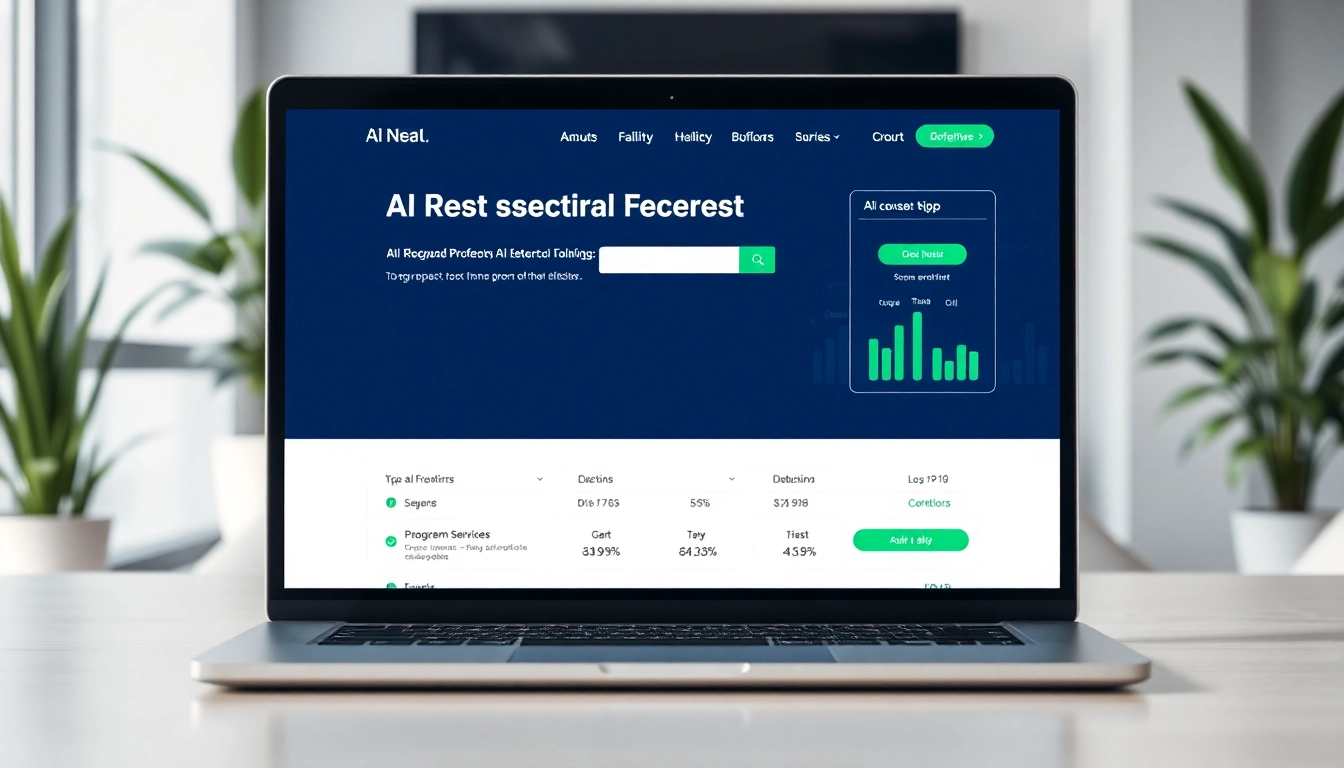Understanding AI Checkers: Importance and Applications
As we navigate an era where artificial intelligence (AI) plays an integral role in content creation, the demand for tools that can verify the authenticity of this content becomes increasingly critical. This is where AI checkers come into the picture. An ai checker analyzes text to determine its origin and whether it has been generated by AI-based systems, ensuring that human oversight remains in the loop to prevent the spread of misinformation and uphold content integrity.
What is an AI Checker?
An AI checker is a specialized tool designed to analyze and detect content generated by AI models. These models are often utilized in various applications, from writing essays to generating marketing content. The purpose of an AI checker is to differentiate between human-generated text and AI-generated text, making it essential for education, content creation, and any field that values originality and authenticity.
Why Use an AI Checker?
The implications of AI-generated content are vast. For educational institutions, AI checkers help maintain academic integrity by preventing plagiarism. For businesses, these tools ensure that brand messaging remains authentic and resonates with their target audience. Furthermore, as AI-generated content becomes more sophisticated, AI checkers serve as a safeguarding mechanism against misinformation, ensuring consumers receive reliable information.
Common Use Cases for AI Checkers
- Academic Integrity: Used by educators to ensure that student submissions are original and not AI-generated.
- Content Authenticity: Employed in marketing and PR to verify that communications accurately represent brand voice.
- Misinformation Prevention: Used by publishers to ensure that news articles and reports are not based on AI-generated fabrications.
- Compliance and Legal Requirements: Ensuring that produced content aligns with copyright laws and regulations.
How AI Checkers Work: Technology Behind the Detection
Machine Learning Algorithms in AI Checkers
AI checkers rely chiefly on machine learning algorithms to analyze text patterns. These algorithms are trained on vast datasets comprised of both AI-generated and human-written text, allowing them to identify subtle differences in structure, punctuation, and style. Examples include supervised learning models, where the algorithm learns from labeled data, and unsupervised models, which seek to identify inherent patterns in unlabeled data.
Data Analysis Techniques Used
Several data analysis techniques are employed within AI checkers, including:
- Natural Language Processing (NLP): This technique helps the software understand human language, breaking down syntax, semantics, and context.
- Statistical Analysis: Models use statistical patterns to determine likely human authorship based on elements such as word choice and sentence length.
- Pattern Recognition: AI checkers analyze text for identifiable patterns common to AI-generated content, such as repetitive phrasing or lack of nuanced argumentation.
Accuracy Metrics of AI Detection
Evaluating the accuracy of AI checkers involves several metrics, notably:
- Precision: The ratio of correctly identified AI-generated texts to all texts identified as AI-generated.
- Recall: The ratio of correctly identified AI-generated texts to all actual AI-generated texts.
- F1 Score: A balance between precision and recall that provides a more comprehensive view of a model’s accuracy.
Choosing the Right AI Checker: Key Factors to Consider
Features to Look For in an AI Checker
When selecting an AI checker, consider the following features to ensure you choose the right tool for your needs:
- Multi-Model Support: A robust AI checker should be able to detect content generated by various AI models such as GPT-3, GPT-4, and other emerging technologies.
- User-Friendly Interface: The tool should have an intuitive interface, allowing users to easily navigate and use the checker without technical knowledge.
- Real-Time Analysis: Fast processing times to allow users to obtain results quickly.
- Comprehensive Reporting: Detailed feedback regarding detected AI-generated passages and suggestions for improvement.
Comparing Popular AI Checkers
When comparing popular AI checkers, it is beneficial to look at their unique functionalities, such as:
- Grammarly: Known for its grammar-checking capabilities, it also includes a feature that flags AI-generated text.
- Copyleaks: Highlighted for its support of multiple languages and an ability to assess content across various AI models.
- Quillbot: Offers free AI detection with an emphasis on accessibility and ease of use.
User Experience and Accessibility
Even the most powerful AI checkers may fall short if users struggle with their interfaces. Therefore, usability should be prioritized. Look for checkers that offer:
- Cross-Platform Functionality: Availability on multiple devices and browsers.
- Clear Instructions: User guides or tooltips that assist users in understanding how to leverage the tool effectively.
- Responsive Customer Support: Accessible troubleshooting and support services in case users encounter issues.
Integrating AI Checkers into Your Workflow
Step-by-Step Guide to Implement AI Checkers
Integrating AI checkers into your workflow can be straightforward when following a systematic approach:
- Identify the Need: Assess the specific requirements based on your field—education, marketing, journalism, etc.
- Select the Right Tool: Choose an AI checker that fits your identified needs and offers the desired features.
- Provide Training: If necessary, ensure that all users are trained on how to utilize the tool to maintain efficiency.
- Implement and Monitor: Start using the tool, making adjustments based on user feedback and evolving needs.
Best Practices for Effective Use
To maximize the benefits of AI checkers, adhere to these best practices:
- Utilize in Context: Use AI checkers in conjunction with human oversight for nuanced understanding.
- Regularly Update Knowledge: Stay informed about new AI technologies and capabilities to keep tools relevant.
- Conduct Periodic Assessments: Evaluate the effectiveness of your chosen AI checker and adapt as needed.
Case Studies: Successful Implementations
Several organizations have successfully integrated AI checkers into their processes:
- Educational Institutions: Colleges and universities have adopted AI detection tools to uphold academic integrity, ensuring students submit original works.
- Media Outlets: News organizations utilize AI checkers to verify the authenticity of articles and prevent misinformation.
- Corporate Communications: Companies embedding AI checkers within their content creation process to ensure consistency and authenticity in branding.
Future Trends in AI Detection Technology
Emerging Technologies in AI Checkers
The landscape of AI checkers is evolving rapidly. Future trends indicate advancements such as:
- Deep Learning Integration: More sophisticated models that leverage deep learning to enhance detection capabilities.
- Behavioral Analysis: Tools that go beyond text analysis to evaluate user behavior patterns when creating content.
- Collaborative Filtering: AI checkers that personalize detection based on the user’s previous interactions and outputs.
Predicted Developments in User Needs
As AI technology continues to evolve, user needs are expected to shift towards:
- Greater Accuracy: Users will demand tools that can provide ever-more precise assessments.
- Cost-Effectiveness: Affordability will remain a key consideration, especially for educational sectors.
- Integration with Other Tools: Seamless integration with existing applications for a more cohesive workflow.
The Role of AI Detection in Content Creation
As content creation increasingly relies on AI, AI detection will play a vital role in shaping the future of content. The significance of human oversight will persist as brands and creators strive to maintain authenticity and connection with audiences in an evolving digital landscape.























+ There are no comments
Add yours